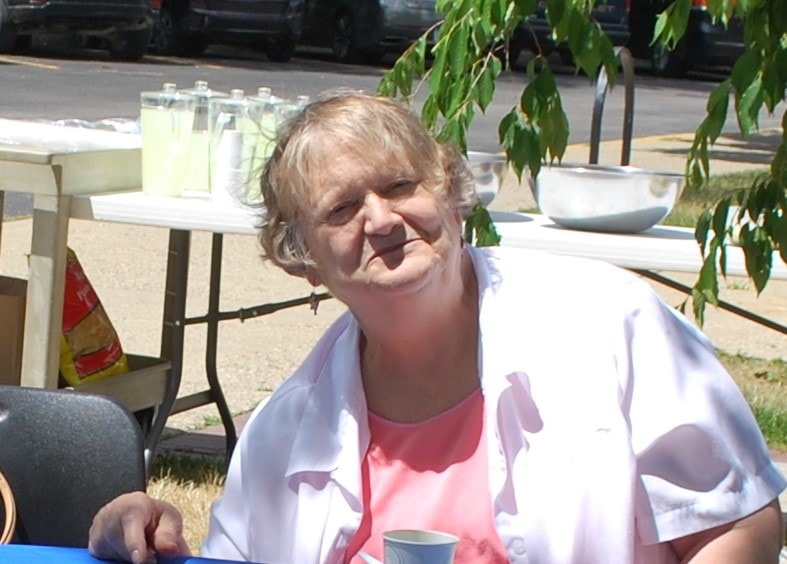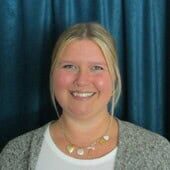Washtenaw County is home to more than 45,000 adults age 65 and over. Despite the high number of older adults in the county, there are few outlets for them to tell their stories. The Ahead of the Curve blog is excited to share stories from interesting adults throughout the county. In honor of tomorrow being World Day of Social Justice, our inaugural interview is with SallyGeorge Wright, a Michigan transplant who was active in the Not in Our Town Movement in Billings, Montana.
Ahead of the Curve: Where were you living before you moved to Ann Arbor?
SGW: I lived on a reservation in Fort Peck, Montana. Before moving to the reservation, I lived in Billings, Montana, the largest city in Big Sky Country. I was there off and on for ten years. We had a lot more snow than we do here! The people there were nice, but there were some that weren’t open minded.
When we first moved there from Kansas, one of my daughter’s classmates said that he’d never met a Jew before, but he wished they’d all been killed in the ovens. She was eleven and she had never experienced any kind of discrimination before.
AoTC: Can you please describe the events that led up to the Not in Our Town movement?
SGW: Tammy Schnitzer was very active in the local Jewish congregation. In 1993 or 1994 when the cinderblock went through the window at the Schnitzers’ home, the babysitter didn’t realize that a cinderblock had gone through the window because she was in the basement in the children’s playroom. When Tammy and her husband came home, they found the cinderblock, which had gone through the young boy’s bedroom window where they had a menorah. The parents were very afraid, so the family slept underneath the parents’ bed. They pretty much slept there the rest of the time they were in the house.
They were very afraid. Then their car was vandalized, and my friend’s car window was shot through. She belonged to the congregation too. There was a man who would call me and ask if I knew where my daughter was. I don’t know where he got our phone number from, but he did. Then he started following us around, so I didn’t let my daughter go out alone. I would often drive around to try and lose him; it was pretty scary.
The skinheads went to the African Methodist Episcopal Church and stood at the back and stared at people. Then some people that belonged to a coalition in Billings that was formed came and sat in the Church every Sunday until the skinheads left.
There was an interracial family and when they were asleep their home was vandalized. Some people from the painters’ union came and painted over it as a sign of support for the family. Our house was across from the Synagogue, so in the mornings I would go over and remove the racist and anti-Semitic posters they would put up on the door of the Synagogue and on nearby traffic signs; they were really awful things. At least one family stopped coming to the Synagogue altogether out of fear.
I was the vice president of the Synagogue, I was also the chair of the meeting where we talked about having a candlelight vigil. A group of people, including Tammy, wanted to have a candlelight vigil at the Synagogue, but others didn’t want the publicity or to have our address published in the paper. We had had a bomb threat, so already there were problems.
Tammy had the idea, with the help of some other people, of having menorahs in the newspaper so people could cut them out and put them on their window. There was a great deal of support for the movement. I’m not sure exactly when they started calling it “Not in Our Town,” but in the newspapers it would say not in our town. Finally, the aggressors broke some sort of city rule and they were arrested and told that the charges would be dropped if they left town. That’s why they left town.
Many people in the congregation helped with what was going on, they were supportive and put actual menorahs in their windows, not just the paper menorahs. One of the really great things was instead of making it something that would be more aggressive, there was quiet, peaceful protest.
AoTC: What prompted you to move to Washtenaw County?
SGW: I retired at the reservation and my daughter and her family were here [in Saline]. They wanted me to come and I wanted to come too because I’d only seen my granddaughter for a visit when she was six months old. I have a lot of interaction with them. I stay over at least once a month. We go places together and when they have parties I often help with the children. I received master’s degrees from Wayne State and Oakland University when I was younger, and a PhD at the University of Windsor in Ontario. I also wanted to come here because there are a lot of Synagogues. I had to travel 240 miles to travel to Synagogue when I lived on the reservation. It’s been really wonderful to be so close to centers where Jewish people pray and socialize!
AOTC: Is there anything else you would like to add?
SGW: That people of all races and religions have the capacity to reach out to one another and to be open to the differences, especially between cultures especially. Ann Arbor is a really warm, welcoming, and open community.
See below for a clip from the 1995 PBS documentary about these events:
Thank you to SallyGeorge for sharing her experiences about this difficult time.
If you would like to learn more about the Not in Our Town movement, you can visit the movement’s website here.






